Hi my name is Walking Wally. I am an epaulette shark. I am most commonly known as a species of walking shark. I am 25 years old and am coming to the end of my life. I have spent most of my days hunting at night and hiding from predators during the day. At night I put my nose in the sand to look for small things like worms or crabs during low tide. If I am dry on land (it happened) I can use my fins as legs… sort of. Global climate change has made epaulettes hatch earlier and weaker. Today I am about three feet long, but I’ve heard of an epaulette shark about three and a half feet long. Epaulettes have 47 to 67 teeth but we don’t bite. Now please leave my alone or that won’t be true anymore
Don’t worry but they’re real. Land sharks. 🦈
Okay not really, there known as walking sharks. recently a new theory has been made to study these unique sharks. Before we get into that a quick expatiation is in order. Walking sharks (or land sharks if you prefer) are a group of Selachimopha ( sharks) which has nine species that we know of. The reason there called walking sharks is quite clear. Walking sharks branched of about nine thousand years ago, making them the earliest group of sharks, they have evolved to use there pectoral and pelvic fins to not only walk on the ocean floor but because of the fact that they don’t need to use much oxygen, can walk in land hence the name walking shark
the theory of studying these creatures has shone that this species developed much earlier than other groups of sharks and, have been a sort of a big deal recently, because of the new way to study them which is why I have made my blog about them this week!
a day for one species of walking sharks called the epaulette shark would be something like this. I use most my day hiding from predators
Strange matter
Many people might think that the most dangerous state of matter is plasma, the fiery stuff that makes up our sun and many others like it. Plasma can be very dangerous and could burn you to a crisp, but what would you say if there were something even more dangerous zooming through the universe all the time hitting planets and stars at random ruining there chances of sustaining life. Unfortunately there is! Don’t worry it “probably” won’t hit us any time soon, but then again.. never mind.
Wait what is strange matter anyway. First we need to discuss quark matter. When a big star’s core collapses on itself The quarks [the particles building up the particles that make up the atom] are pushed together by gravity and are trying to push away from each other. If gravity proves stronger than the quarks it will become the single most dense thing in the known universe a black hole, but if not it becomes a neutron star the second most dense thing in the universe, and is made of quark matter. Sometimes this stuff goes through a reaction that causes it to become the most dangerous state of matter, strange matter. Strange matter is jus like quark matter except it’s stronger and very stable. So stable in fact that it might even turn any other state of matter into quark matter, and as I said they are shooting around the universe as we speak as small bits called stranglets coming from when neutron stars that hold strange matter [strange stars] hit other neutron stars or black holes, or even appeared when the Big Bang had just started when everything and every were had the same conditions as a neutron stars. At least if you become a blob of strange matter you will know why.
The atom
In the universe there is one thing that builds a large number of things in it. This is called atoms. Atoms are super small things made of particles, and in extremely large amounts can build a molecule. Molecules are what build all the things on earth, like a Snake, a book and even you. They have three forms, solid liquid and gas.
- So what makes up the rest of the universe. Scientists don’t know exactly what everything is yet, like dark matter. One of the things we do know is that every thing is made of particles. The sun is made of something called plasma. Plasma happens when the particles of atoms break apart into particles due to the heat and extreme temperatures might even become quarks, enough of that for now though. The biggest questions to the universe have not been answered yet, but the help of understanding the atom maybe one day even the oddest of them will be uncovered.
color changing snakes?
yes you heard it in the jungles of Borneo you might find the kapuas mud snake capable of changing color to camouflage. but this is not the only snake that has changed in order to survive. for example the rattle snake uses its tail to warn animals of its presents and its danger. boas have evolved to constrict there prey rather than give it there bite. some snakes will even give live birth. so get ready and pick your piosen
Archimedes

In science class we learned about Archimedes, and the discovery he made while trying to figure out if a crown was pure gold or not (it wasn’t). His discovery was that an object displaces an amount of water equal to its volume. Archimedes theory was that, if the crown was pure gold, and the crown weighed the proper amount, then the crown would displace the same amount of water that an equal amount of pure gold (in a bar or nugget, for instance) would displace, but, if the gold had been mixed with another substance with different density, such as silver, it would displace a different amount. A crown weighing the same but containing some silver would displace more water, because silver is less dense than gold, giving the same weight of silver more volume. We use his discovery to measure the volume of an irregular object- the volume is equal to the volume of water it displaces.
Archimedes made many other discoveries, including the “law of the lever”. Archimedes noted “Give me a place to stand, and a lever long enough, and I will move the world.” in which he describes how,Archimedes discovered that, as long as the object to be moved is further from the fulcrum than the point that the input pressure is from the fulcrum, lever will amplify the input force- which allows a person to lift things that are much heavier than themselves or whatever pressure they can naturally apply.
Super Star
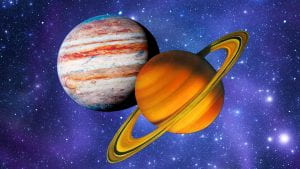
This December 21st, the paths of the two biggest planets in our solar system- Jupiter and Saturn- will only be a fraction of the moon’s width away from each other. Jupiter already appears brighter than any star from were we are, and the two are the largest planets in our system, so that the conjunction will create such a large, bright light that it looks like an enormous star. This conundrum has baffled people for a long time, and the last time it appeared this visibly from Earth, in 1226, was shortly after the planets were discovered by Galileo Galilei.

This sight is amazing, and is a sight to behold for sure, though it is not always easy to see. While this is as close as the planets have been since 1623, the conjunction actually occurs about every 20 years. Unfortunately, most often, it cannot be witnessed because of the position of the planets relative to the Sun or because of the timing. 20 years ago, because the time it occurred was about the afternoon, the glare of the sun made it practically invisible. The last time the great conjunction was this close was 1623, but was not visible from Earth, so the last time it could really be seen was around the dark ages . In the story of Jesus Christ’s birth, the three wise men who brought him gifts followed a giant star to Bethlehem. Some scientists, including famous astronomer Johannes Kepler, have proposed this could also have been a time when the great conjunction was visible. No matter what, we are about to see a really cool event.
Wait… I still have some questions.
What happens if three planets come together?
What if earth were getting that close to another planet?
What happens if an eclipse is happening at the same time?
The Animal Kingdom World Records
From biggest to smallest, fastest to slowest, highest to lowest, and even a few more bizarre ones, animals hold many world records. In this week’s blog, I will show you a few fascinating biological world records.
Paedophryne amauensis is the smallest vertebrate animal in the world. Discovered less than a decade ago in leaf litter on the forest floor of New Guinea, this frog is the size of a house fly!
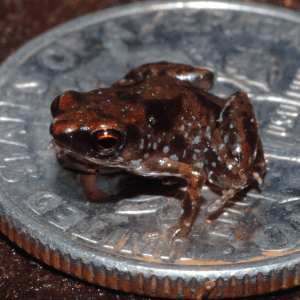
The slowest mammal in the world is the three-toed sloth (genus Bradypus), which moves 2.4 to 1.8 meters per minute because of his low-nutrient diet of only leaves.

The most looked-up animal on google happens to be the dog. How about that.

The longest trip when migrating goes to the reindeer, or caribou (Rangifer tarandus), traveling 745 miles. Unless you count Christmas Eve!

If you think our lives are too short, you should consider the mayfly’s (Hexagenia limbata). This insect holds the record for the shortest life span at 24 hours -at most! If that’s not short, I don’t know what is.

Let’s hear it for a two-category champion! The blue whale (Balaenoptera musculus) has the loudest call in the world, as well as being the biggest animal in the world.

Of course there are thousands more. Some are just too gross to think of, but I wonder
1. what is the most-legged animal?
2. what is the biggest microbe in the world?
3. what is the smallest whale?
The Venus Fly Trap
This week in science, we began our biome projects. This morning I was going to grow my Venus fly trap when I thought, “How can it live in the harsh habitat that it lives in?” Just like other organisms that live in extreme biomes, such as peat bogs and the abyssal zone of the ocean, the Venus Fly Trap has an unexpected adaptation. So, I decided that would be what my blog was about.
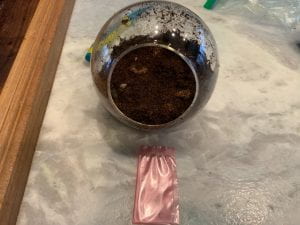

The Venus Fly Trap is one of the most well known carnivores plant. The Venus Fly Trap lives in the bogs of North and South Carolina. In this habitat the soil is low in nutrients and is acidic. To cope with this, the Venus Fly Trap has adapted to be carnivorous- it eats bugs that land on it. The Venus Fly Trap is the state plant of South Carolina.
The Venus Fly Trap is not the only type of carnivorous plant.
Other plants that eat other living things are:
1. Cobra lily (Darlingtonia californica)

2 . Butterwort (Pinguicula)
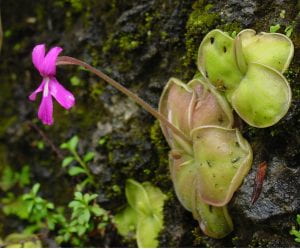
3. Sundew (Drosera)
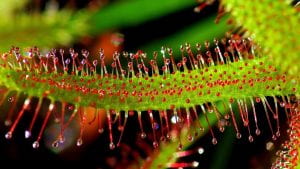
and many more.
One of the most interesting things about carnivores plants is that, although they don’t brain cells, they have chemicals that act like a brain so that they can react when there prey is in range. With the Venus Fly Trap when a insect triggers one of usually six hairs the trap closes first with a few openings so if the bug is to small it will escape so the Fly Trap doses’ the the waist energy on a small meal, if it is small enough it will open up its pedals again, but if the bug is to big for the mouth to close it will let in bacteria that will kill it. If the bug is the right size it will bring in Asia’s to break down the bog and in five to twelve weeks it will spit out the exoskeleton, without the bug.
The Carolina bogs biom is low in nurturant and the soil is acidic, and yet the Venus fly trap thrives in this harsh environment because of its incredible, and slightly strange, adaptations.
Experiments
This week I did two experiments. The first one is butterfly pea flower tea. First you put butterfly pea flower in water to make it blue, after that you put a small amount of citric acid in it and it will turn purple. If you put a lot of citric acid in it, it turns pink. How does it work? Inside of the flower has something called delphinidin which is a blue pigmant that changes perpel in the presence of small amounts of acid and pink in larg amounts of acid. If you were to add something very basic, like lim. We tried to make it green or yellow, but our stuf wasn’t basic enough.
 This is what it looks like when you add the flowers to warm water.
This is what it looks like when you add the flowers to warm water.
See the rest of the experiment, when we added slightly acidic soda and straight citric acid here:
Our second experiment is known as “Elephant Toothpaste”.
By adding water, dish soap, hydrogen peroxide and yeast, we created this:FullSizeRender
The hydrogen peroxide is made up of 2 hydrogen molecules and 2 oxygen molecules (H2O2). The yeast is a catalyst, and 1 oxygen molecules escapes, then fills in the space in the soap, causing it to expand. In the end, we just have oxygen, soap, and water (H2O), so it’s actually safe to play with it.